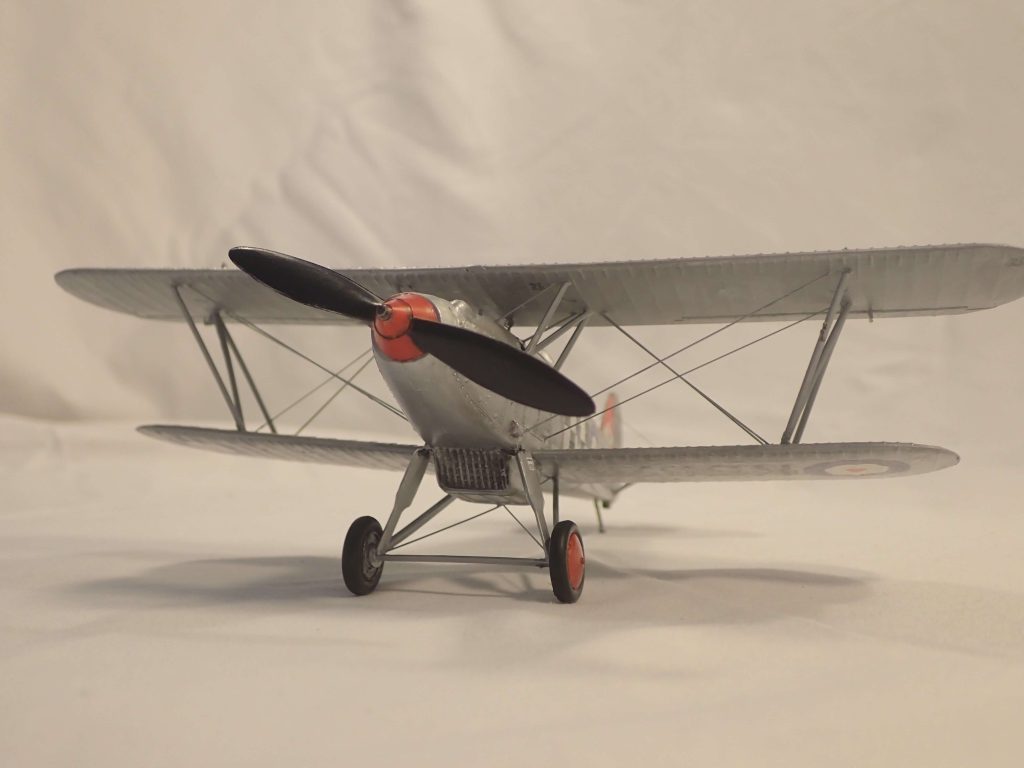The Hawker Fury was the first in a long line of similar designed biplanes used by the RAF and FAA during the 1930’s. The Fury was a fast, agile aircraft designed as an interceptor by Hawker, the first interceptor to operate with the RAF.
The Fury was developed from the Hawker Hornet prototype replacing the engine with the Rolls Royce Kestrel. The Hornet was purchased and after further tests the name Fury was designated as it was considered more ferocious. The Fury used the new Rolls-Royce F.XI in-line engine giving it vastly superior performance over other fighters of the time. The Fury has the distinction of being the first RAF fighter to reach speeds in excess of 320km/h. It was also the most aesthetically pleasing biplane of the period. The Fury was exported to seven overseas countries including Spain, South Africa, Yugoslavia, Iran and Portugal.
The Fury I was introduced in May 1931 with No.43 Squadron closely followed by No.1 Squadron and No.25 Squadron to form an elite home defence force. The introduction of the Fury II in 1936 increased unit strength to six squadrons. The Fury remained in RAF service until January 1939 when it was replaced with Gladiators and Hurricanes.
The Fury never saw action with the RAF although some exports served with various European Air Forces until 1941, notably by Spanish Republican Air Force during the Spanish Civil War and Yugoslav Air Force where the type suffered terrible losses against the German Messerschmitt Bf.109’s.
262 Furies were produced of which only 2 have survived. One is airworthy, K5674, at the Imperial War Museum, Duxford, England.
